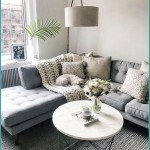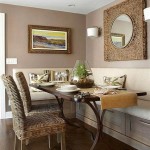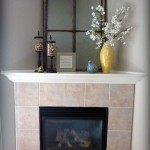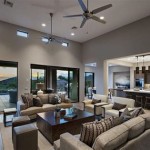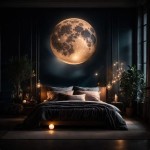Newborn Baby Room Decoration: A Guide to Creating a Safe and Soothing Space
Decorating a newborn’s room is an exciting and significant undertaking. It provides an opportunity to create a nurturing and stimulating environment for the newest member of the family, fostering their development and ensuring their comfort. However, the process requires careful consideration to prioritize safety, functionality, and the baby's specific needs. This guide provides a comprehensive overview of key aspects to consider when planning and executing the decoration of a baby's room.
Prioritizing Safety in the Nursery
Safety should be the foremost concern when designing and decorating a baby's room. Numerous potential hazards exist, and it’s imperative to mitigate these risks before the baby arrives. This includes a thorough assessment of the room’s structure, furniture, and decorative elements.
One critical area is the selection of furniture. Cribs must meet current safety standards, with slats no more than 2.375 inches apart to prevent entrapment. The mattress needs to be firm and fit snugly within the crib frame. Avoid using bumpers, pillows, or loose blankets in the crib, as these pose a suffocation hazard. Similarly, changing tables should be sturdy with safety straps to secure the baby. Drawers and cabinets should have safety locks to prevent access to potentially harmful items. Rocking chairs or gliders should be stable and placed away from any dangling cords or electrical outlets.
Additionally, the room's environment itself needs attention. Ensure the room has adequate ventilation while maintaining a comfortable temperature, typically between 68-72 degrees Fahrenheit (20-22 Celsius). Window treatments, such as blinds or curtains, should be cordless or have cords that are secured out of reach. Ensure electrical outlets are covered with safety plugs. Secure any heavy furniture to the walls to prevent tipping hazards. Avoid placing the crib near windows or anything with cords like electrical outlets. Smoke detectors and carbon monoxide detectors should be installed and regularly tested.
Choosing Nursery Colors and Themes
Color palettes and thematic elements significantly impact the ambiance of the nursery. The goal is to create a calm, comfortable, and stimulating environment. While personal preference plays a substantial role, some general guidelines can inform the decision-making process.
Neutral colors, such as soft pastels, whites, creams, and grays, often create a serene and soothing atmosphere. These colors provide a versatile backdrop that can be easily adapted as the baby grows. Brighter colors, such as yellows, greens, and blues, can also be used for accent walls or accessories to add pops of energy and visual interest. It is important to consider the reflectivity of different colors and their impact on light levels. Avoid dark colors in any large amounts, as these colors can make a room feel small.
Theme selection is largely dependent on the parent's tastes. Popular themes include animals, nature, celestial designs, or classic characters. The theme can be incorporated through wall art, bedding, and accessories. A well-chosen theme can create a cohesive and personalized room design. It’s important to avoid themes or decorations that might overstimulate the baby, especially in the early months. A simple and elegant theme with a good balance of visual interest and calmness is a great option.
Selecting Functional and Practical Furniture
The furniture selected for the nursery greatly impacts its functionality. Each piece must serve a practical purpose and contribute to an organized and user-friendly space. Prioritizing functionality ensures that the room remains a safe and convenient space.
The crib is the central piece of furniture in the nursery. Its selection is paramount, considering the baby’s safety and the parents’ accessibility. A changing table, whether a dedicated piece or a changing pad placed on a dresser, provides a designated space for diaper changes. A comfortable rocking chair or glider offers a place for feeding, soothing, and bonding with the baby. Dressers and storage solutions, like shelves and baskets, are essential for organizing clothing, diapers, and other baby essentials. Consider the size of the nursery and choose furniture that fits comfortably without overcrowding the space. Choose furniture that can adapt to the baby’s needs as they grow.
Storage solutions are key to maintaining a clutter-free and organized space. Consider the placement of open shelves for frequently used items and closed storage for less-used items. Adequate storage prevents clutter and promotes a tidy environment. Baskets and bins can be useful for storing toys, blankets, and other items. Select furniture that can hold clothing, baby items, equipment and supplies.
Designing Lighting and Window Treatments
Lighting and window treatments play a pivotal role in setting the ambiance of the nursery and ensuring the baby’s comfort. Proper lighting allows the baby to see, be soothed, and sleep according to their needs. Window treatments manage light levels and provide privacy.
A combination of lighting sources is ideal. Overhead lighting provides general illumination, while a dimmer switch allows the brightness to be adjusted. A bedside lamp provides soft light for nighttime feedings and diaper changes. A nightlight provides low-level illumination that helps with navigation. Consider the placement of light sources to avoid creating shadows or harshness. Avoid fluorescent lighting, which can be harsh and potentially disruptive to the baby.
Window treatments control the amount of natural light that enters the room and provide privacy. Blackout curtains or blinds are beneficial for creating a dark environment conducive to sleep. Sheer curtains or blinds can filter light during the day, allowing natural light to enter while maintaining privacy. Choose window treatments that are easy to clean and maintain. Cordless options are safer for children.
Adding Decorative Elements and Accessories
Decorative elements and accessories personalize the nursery and add visual interest. However, prioritization of safety is still important. These elements create a welcoming atmosphere and reflect the parents' style. While adding character, one must ensure these items are not overly stimulating, distracting, or dangerous.
Wall art, such as framed prints, murals, or decals, can introduce a theme or add color and visual interest. Choose pieces that fit the room's overall design and are appropriate for the baby's developmental stage. Decorative pillows and soft blankets can add texture and warmth. Be mindful of the materials used and ensure they are safe and washable. Consider using washable rugs and floor coverings for comfort and ease of cleaning. Make sure that the baby is not likely to interact directly with the rug, potentially causing allergic reactions.
Accessories, such as mobiles, musical toys, and artwork, can stimulate the baby's senses. Mobiles should be hung securely and out of the baby's reach. Choose toys that are age-appropriate and promote sensory development. Limit the number of accessories to avoid overstimulation. The room's overall design should feel balanced and uncluttered. Focus on creating a soothing, inviting, and safe space.

Nursery Design Ideas For Your Baby Designcafe

This Baby Room Décor Guide Will Help You Prep For Pahood

Pin En Room


Super Cute Newborn Baby Room Decorating Ideas Socal Mommy Life
:max_bytes(150000):strip_icc()/acf035_76d222edea6944beaae1d282c9016331mv2-ed8fe09e43ee4bc89527af58d4070433.jpeg?strip=all)
40 Baby Room Ideas For Decorating A Nursery That S Unique

Top 15 Innovative Baby Room Decoration Ideas

Easy And Effective Baby Room Decor Ideas Designcafe
:max_bytes(150000):strip_icc()/floral-nursery-wallpaper-design-6a2bf0aa674c4559aba0d21df35964b6-2231c2cb90c8403788622823035bcdf7.jpg?strip=all)
57 Inspiring Nursery Ideas For A Baby Girl

Pin On Tatoeage Ideeën
